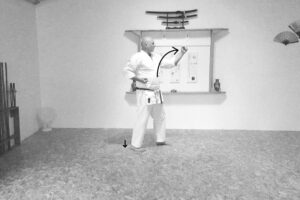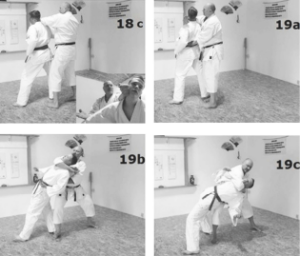 By learning Kata, you get the opportunity to follow in the footsteps of the ancient masters. If you perform Kata with the right spirit, confidence, and humility, you will eventually understand the thinking and meaning behind these.
By learning Kata, you get the opportunity to follow in the footsteps of the ancient masters. If you perform Kata with the right spirit, confidence, and humility, you will eventually understand the thinking and meaning behind these.
In the past (except Kumite), Kata was the only way to train, later the concept of Kihon came into being. Training Kata was a way of remembering techniques, as well as improving one’s skills, by diligently training Kata repeatedly.
When performing a Kata, you must observe the surroundings and react quickly. It takes vigilance to perform a Kata (Zanshin). Your breathing is adapted to the respective techniques; this applies to both defense and offense techniques.

All techniques in a Kata have a meaning, thus there are no unnecessary movements. The application of the techniques should be practiced repeatedly (Bunkai, application of the techniques).
In Kata, the techniques often have several uses and interpretations. Therefore, you must listen intensely when the instructor reviews the techniques. By analyzing the techniques and practical applications of Kata, it contributes to the continued development of Karate. As I have always said, “a Karate style that cannot look beyond its horizon cannot develop, it will stagnate”.
Please feel free to experiment with the techniques of a Kata. Look at other styles and interpretations, you might learn something.
The physical aspect of Kata training.
The performance of Kata contributes to the
